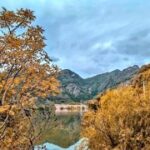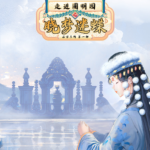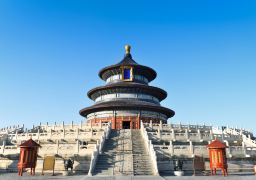Yunpu Gully is located in the Ban Kai Dou Fu Mountain at the border between Yanqing County and Chicheng County, Hebei. It is approximately 16 kilometers southwest of Yanqing Town and 6 kilometers east of the Longqing Gorge Scenic Area, adjacent to the Xianglong Road. The mountain, with an elevation of 1157 meters, is part of the Jundu Mountains and is on the northwest side of the Yanqing Basin. The gully is named ‘Yunpu Gully’ due to its numerous streams and waterfalls. The mountaintop features over a hundred acres of ‘subalpine meadows’ and vast wastelands suitable for outdoor camping, offering geographical advantages for hiking and long-distance travel.
The Yunpu Gully Scenic Area covers more than 4000 acres and is a rare pristine natural landscape in the northern part of China, with scenery that changes with the seasons: in spring, the mountains are filled with blooming flowers in a riot of colors; in summer, the clouds provide shade for the green leaves, and the streams and springs are crisp and sweet; in autumn, the sky is high and the clouds are light, with boundless meadows; in winter, everything is covered in silver, like ice sculptures and jade carvings. The Yunpu Gully canyon, known locally as ‘Old Wind Gully,’ is cool and breezy in the summer. Inside the canyon, there are multiple small streams that flow gently, winding and intermittent, appearing and disappearing, much like the poetic imagery in Wang Wei’s quatrain ‘In the Mountains’: ‘Jing Creek’s white stones emerge, cold sky with sparse red leaves. The mountain path has no rain, but the empty green wets one’s clothes.’ The valley features peculiar stone ridges, each a spectacle: Crocodile Top,磐 Rock Ridge, Lingzhi Stone, Lion King’s Face, Giant Turtle, Seven-Colored Stone, and the distinctive ‘Northern Heaven Pillar’ stone can be seen from a distance within the valley. Other strange and grotesque rocks are scattered throughout, vividly shaped. The valley contains three springs and five waterfalls (the three springs are named Tea Waterfall Spring, Scripture Spring, and Lingwang Spring; the five waterfalls are Yunwang Waterfall, Yunqing Waterfall, Yunfei Waterfall, Yunqu Waterfall, and Yunyi Waterfall), with clear streams that are inviting in both sound and form. According to records, in the spring of 1947, Yanqing County’s county team member Li Chengzhong (from Wanping) sacrificed his life near the second waterfall. At the end of Yunpu Gully, in an area called ‘Foye Bay,’ there are cliff carvings and inscriptions of Buddha statues from the Zhengde period of the Ming Dynasty, which are worth visiting for both sightseeing and worship. From Foye Bay, one can take a mountain trail to the ‘Moyao Pavilion’ on the hillside. The mountaintop boasts a good environment with rich flora and fauna, dense subalpine meadows, and a variety of medicinal herbs and wild flowers, including Codonopsis, Astragalus, Rhododendron, Platycodon, Bupleurum, Acanthopanax, Aconite, Rose, Peony, Lilac, and Schisandra, with Schisandra being particularly abundant. The Tai’an Mountain Nature Reserve, adjacent to Ban Kai Dou Fu Mountain, is home to numerous wild animals, including goral, roe deer, badgers, squirrels, pheasants, hares, and more, as well as over a hundred species of birds such as golden eagles, turtledoves, magpies, orioles, warblers, willow warblers, and woodpeckers, making it an excellent place for sightseeing, mountain climbing, and leisure. The area is open all year round from 09:00 to 17:00. 补充说明:1. The scenic area sells tickets uniformly, and there are no other preferential policies at present.2. The above information is for reference only. For specific information, please refer to the disclosure of the scenic spot on the same day.









